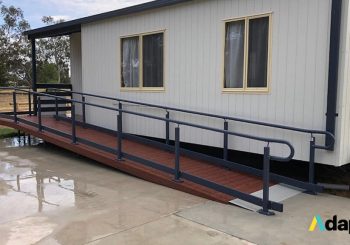People might think that pushing a wheelchair is simple and easy. However, there are certain situations where one needs to consider other factors, such as safety and comfort when pushing wheelchairs.
To minimise the risk of injuries, some things to note are the height and weight of the user and the chair, along with the direction towards where they are headed. This is especially true when going up and down wheelchair ramps.
To help you navigate ramps better and safer for your loved one, below are some helpful tips from the University of Australia:
- When helping someone in a wheelchair down a ramp, going backwards is the safest way. You must be extra careful however as it needs more caution to step backwards. The weight of the chair and the occupant must also be factored in.
- When going up a ramp, it’s best to push the wheelchair from behind. It’s safer for the user and also requires less strength from the pusher.
- Ensure constant communication with the wheelchair occupant and let them know about your next steps or movement so they can prepare.
- Make sure the path is clear before you move the wheelchair up or down
In addition, you can also do the following when helping push in a wheelchair.
- Always ask the wheelchair occupant first on how they want to be assisted, while also considering the safest possible way depending on the scenario.
- Use your body weight to lift the wheelchair or to balance better when tilting it back. If the wheelchair has a tilt bar, put your feet over it to help balance out the weight. You can also leverage on the rear wheels.
- Slightly lean forward and give some ample space between yourself and the wheelchair when pushing
- For easier tilting, use your body weight by stepping on the tilt bar, while also pushing down on the handles.
- Do not tilt the wheelchair back more than necessary.
- Never go over the wheelchair and pull it up on upward ramps.
- Never push a wheelchair down the ramp with the occupant facing the lower end.
- When going downwards on a ramp, use your legs and not your back to balance out the wheelchair.
- Remove unnecessary weight such as bags or water bottles when pushing a wheelchair up or down a ramp.
Another thing to note, however, is that some wheelchair users may not prefer to go backwards, as they want to see where they are headed. To manage this, slightly tilt the wheelchair backwards as you slowly push down the ramp.
If time permits, it is also best to first by pushing around an empty wheelchair. This will allow you to be more familiar with how it works and the best way to maneuver it to ensure the occupant’s safety.
Installing ramps in thresholds makes spaces safer and more inclusive for wheelchair-users. To learn more about custom access ramps and rails that are intuitively designed for safety and convenience, visit Adapta.




